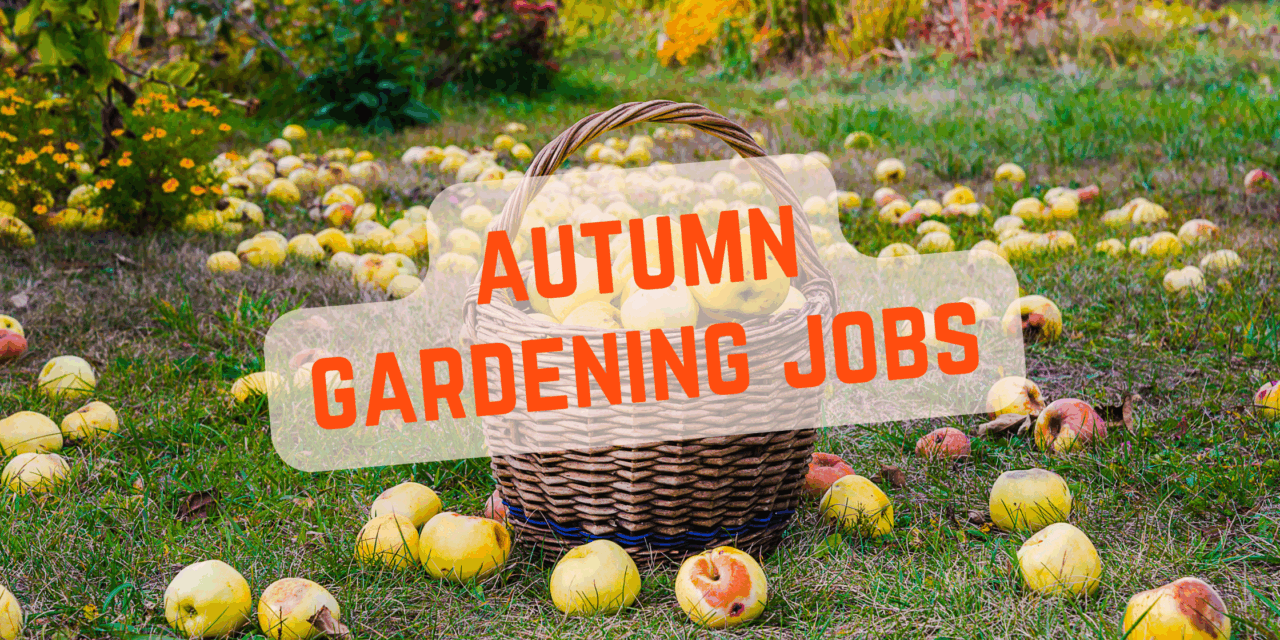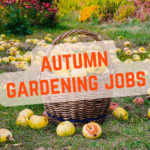As the leaves turn golden and the air cools (although we’re still having some lovely days), autumn is upon us and the perfect time to get your garden ready for winter — and for next spring’s growth.
Whether you have a large plot or a cosy courtyard, these simple autumn gardening jobs will help your outdoor space stay healthy and tidy this autumn.
Clear Up (Gently)
Start by giving your garden a light tidy.
-
Rake fallen leaves off lawns and paths — but don’t overdo it. Leaves can make wonderful mulch or compost material, and small piles left under shrubs provide shelter for insects and hedgehogs. If you can, just move or consolidate your leaves so the wildlife still get the benefits.
-
Cut back spent annuals and tidy borders, removing any diseased foliage to prevent problems next year.
-
Give patios, decking and pathways a quick sweep to stop them becoming slippery over winter.
If you have a small garden, focus on clearing surfaces and pots — even small tidy-ups make a big visual difference.
Plant for Spring Colour
Autumn is the time to plant bulbs for a bright spring display.
-
Daffodils, crocuses, tulips and alliums are all excellent choices.
-
In smaller gardens or containers, layer bulbs (“lasagne planting”) — large bulbs like daffodils at the bottom, mid-sized ones like tulips in the middle, and smaller ones like crocuses near the top.
-
Try popping bulbs into pots, window boxes or even hanging baskets to create bursts of colour next year.
Feed and Protect Your Soil
Healthy soil equals a healthy garden.
-
Once you’ve cleared summer growth, add a layer of compost, well-rotted manure, or leaf mould to nourish the soil over winter.
-
For vegetable patches or bare beds, consider sowing green manures (like clover, rye or mustard) — they’ll protect the soil, suppress weeds, and improve fertility when dug in later.
-
If you have raised beds or pots, loosen the top layer of soil to improve drainage before heavy rain sets in.
Even a few handfuls of compost added to container plants can make a big difference through winter.
Divide and Replant Perennials
Autumn is ideal for dividing overcrowded perennials such as hostas, daylilies and geraniums.
This keeps plants healthy, encourages more flowers next year, and gives you extra plants to fill gaps or share with friends.
In smaller gardens, it’s also a great way to manage space — removing or replanting divisions helps keep borders balanced and fresh.
Look After Lawns and Shrubs
-
Scarify lawns by lightly raking out thatch and moss.
-
Apply a low-nitrogen autumn lawn feed to strengthen roots before winter.
-
Trim hedges and tidy shrubs — but leave some berries for birds.
-
In small gardens, prune overgrown container shrubs to shape them and encourage bushier growth.
Protect Tender Plants
Frost can arrive earlier than expected!
-
Move tender plants like pelargoniums, citrus trees, and fuchsias into a greenhouse, porch, or sheltered spot.
-
Wrap pots with hessian or bubble wrap to protect roots from the cold.
-
Lift dahlia tubers once the foliage has blackened and store them in a dry, frost-free place.
In a small space, even grouping pots together against a house wall can make a sheltered microclimate.
Help Wildlife Settle In
Autumn gardening isn’t just about tidying — it’s also about creating space for nature.
-
Leave some seed heads (like echinacea or teasel) for birds.
-
Make a log pile or small bug hotel in a quiet corner.
-
Top up bird feeders and water sources as natural food starts to fade.
These little touches keep your garden buzzing with life, even through winter.
Refresh Pots and Containers
Don’t forget your containers — they’re often the stars of smaller gardens.
-
Replace tired summer bedding with winter pansies, violas, cyclamen, and ornamental grasses.
-
Add some trailing ivy or heather for texture.
-
Mulch the top of pots with bark or gravel to help retain moisture and keep things neat.
Compost and Recycle
Make the most of autumn’s abundance of organic material.
-
Shred or chop larger branches before composting.
-
Mix green (soft) and brown (dry) materials for the right balance.
-
Even in a small garden, a compact compost bin or wormery can turn waste into gold for next year’s beds and pots.
Pause and Appreciate
Before the nights draw in fully, take a moment to simply enjoy your garden. Notice how the light changes, how the air smells, how nature begins to rest.
Autumn reminds us that letting go is part of the natural cycle — and that the groundwork we do now will blossom beautifully in spring.
In Summary
Autumn gardening isn’t about perfection — it’s about preparation. A little time spent now will reward you with healthier plants, tidier spaces, and a smoother start to the next growing season.
So grab a jumper, a mug of tea, and head out to enjoy those crisp autumn days. Your garden — big or small — will thank you come spring.











